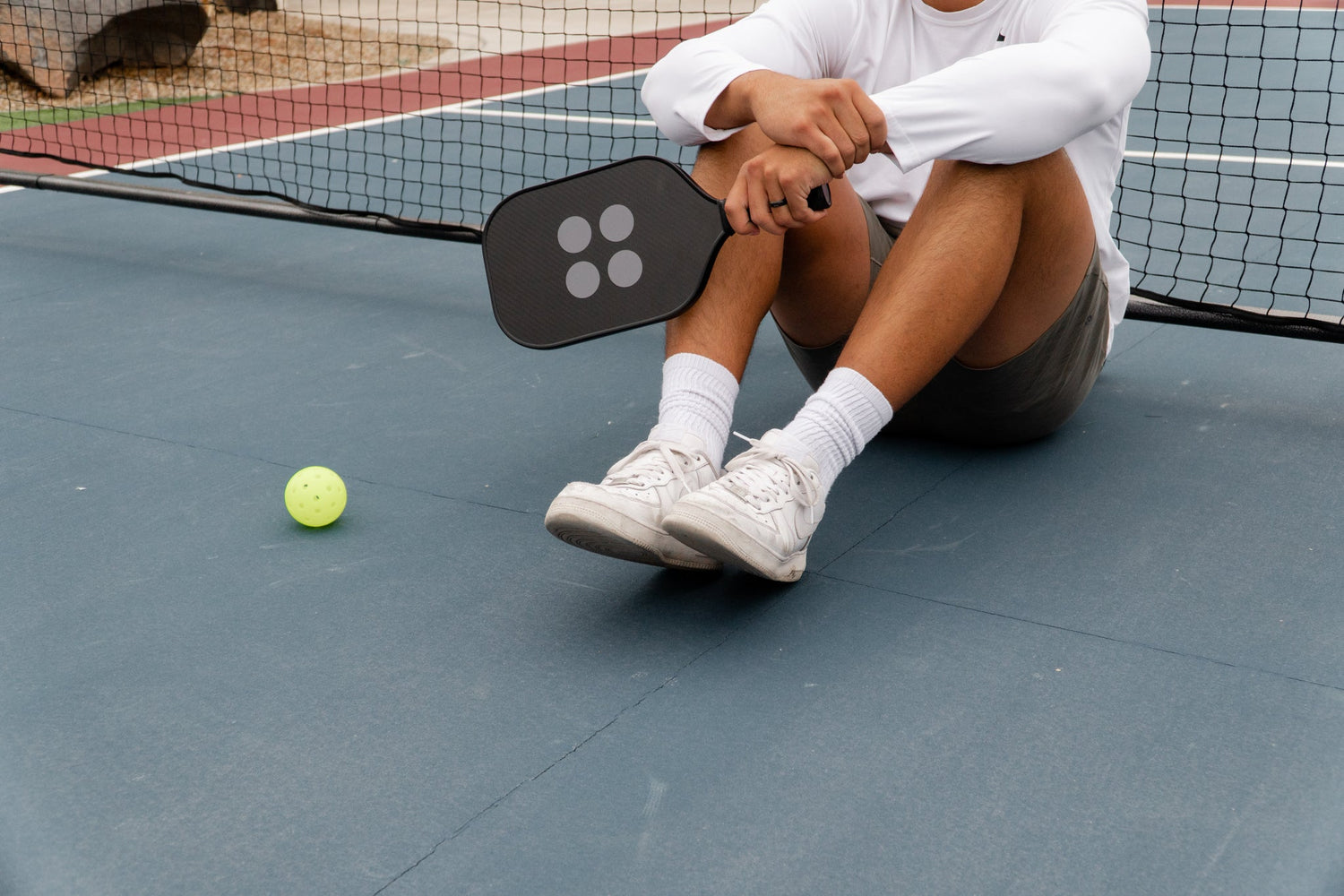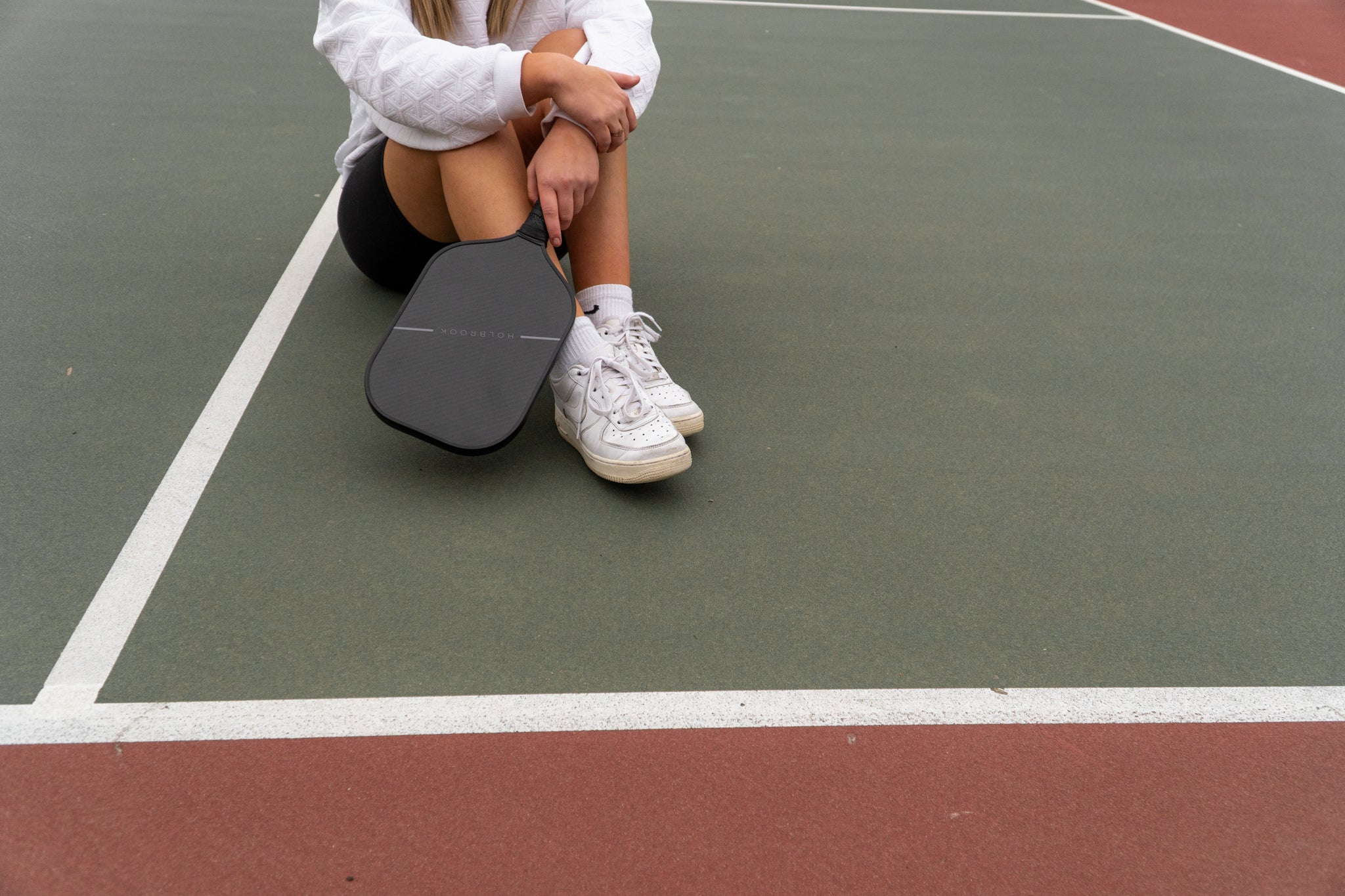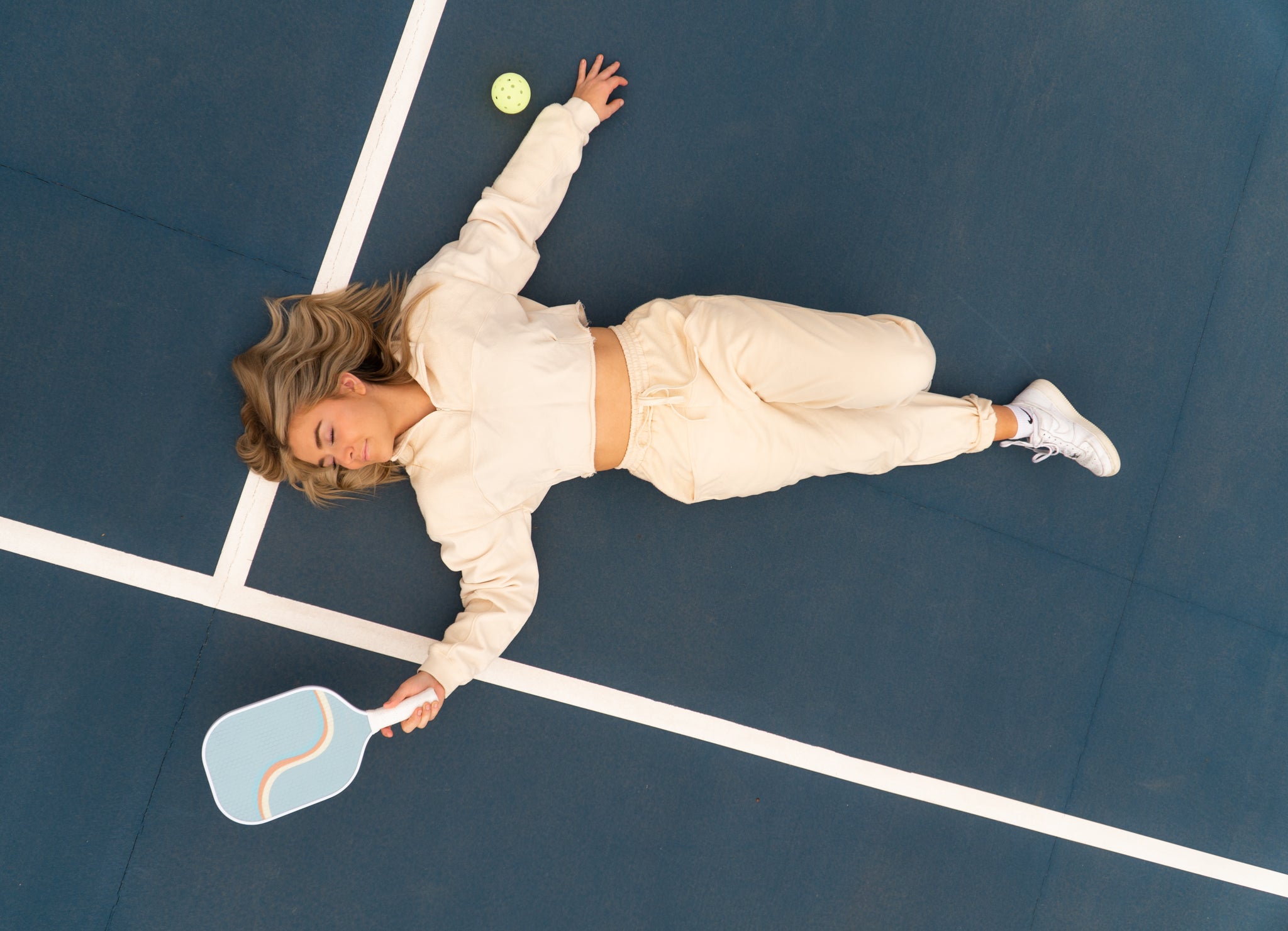What are pickleball ratings?
Pickleball players are expected to be able to rate their skills on the court accurately. Not only is an accurate understanding of the different skill levels key to improving your ability – but it’s also the key to making sure that more experienced players aren’t playing against weaker opponents and vice versa.
Sounds simple enough, but there are several different rating systems and methods that you may need to know about. The rating system for clubs and leagues assigns players a 2-digit number that correlates with a certain amount of key knowledge and skills. Some tournaments use a 4-digit rating system that is based on your most recent match.
For more informal play, such as in gym classes, YMCAs, and community centers, you’ll probably see more general skill groupings rather than these prescriptive categories. Players will self-sort into beginner, intermediate, and advanced without any interest in checking off certain criteria.
Pickleball levels explained
Here are the requisite skills and abilities for each skill level within the 2-digit pickleball rating system according to USA Pickleball:
1.0-2.0
This player is just starting to play pickleball and has no other sports background. Minimal understanding of the rules of the game.
2.5
This player has limited experience. Can sustain a short rally with players of equal ability. Basic ability to keep score.
3.0
Can hit a medium-paced shot with the forehand, when serving/returning, when hitting a dink, when hitting the third shot, and when volleying. Lacks depth, directional control, and consistency. Cannot sustain a dink rally. Knows the fundamentals, has a grasp on court positions, can keep score, and can play in tournaments.
3.5
Moderate level of shot control with the forehand, improved stroke development. Beginning to learn stroke form for backhand and becoming more consistent. Consistently gets serve/return in play with limited ability to control depth. Increased consistency with dink shots, with limited ability to control height/depth. Sustains medium-length rallies. Starting to understand variations of pace. Developing the drop shot in a way to get to the net. Can volley medium-paced shots thereby developing control. Moves quickly toward the non-volley zone (NVZ) when the opportunity is there. Acknowledges the difference between the hard game and soft game. Can sustain short rallies. Is learning proper court positioning. Basic knowledge of stacking and understands situations where it can be effective.
4.0
This player consistently hits forehands with depth and control, though they are still perfecting shot selection and timing. They have improved the stroke mechanics of their backhand and have moderate success at hitting a backhand consistently. Places a high majority of serves/returns with varying depth and speed. Increased consistency with dinks and a moderate ability to control height/depth. May end dink rally too soon due to lack of patience. Is beginning to understand the difference between attackable balls and those that are not. They are selectively mixing up soft shots with power shots to create an advantage with inconsistent results. They can volley a variety of shots at different speeds. Is developing consistency and control. Starting to understand the block/re-set volley. In doubles, they are aware of their partner’s position on the court and can move as a team. Demonstrates ability to change direction offensively. Demonstrates a broad knowledge of the rules of the game. Has a moderate number of unforced errors per game. Solid understanding of stacking and when and how it could be used in match play. Beginning to identify opponents weaknesses and attempts to formulate a game plan to attack weaknesses. Beginning to seek out more competitive play.
4.5
This player has a high level of consistency with their forehand. Uses pace and depth to generate opponents' errors or set up the next shot. With their backhand, they can effectively direct the ball with varying depth and paces with good consistency. Serves with power, accuracy, and depth and can also vary the speed and spin of the serve. Ability to place the ball with high success at changing shot types while playing both consistently and with offensive intent. Recognizes and attempts to hit attackable dinks. Consistently executes effective 3rd shot strategies that are not easily returned for advantage. Able to intentionally and consistently place the ball.
Able to block hard volleys directed at them and can consistently drop them into the NVZ. Comfortable hitting swinging volleys. Hits overhead shots consistently, often as putaways. Has good footwork and moves laterally, backward, and forward well. Uses weight transfer for more efficient footwork. Able to change direction with ease. Very comfortable playing at the non-volley zone. Communicates and moves well with partner — easily “stacks" court positions. Understands strategy and can adjust style of play and game plan according to the opponent’s strengths and weaknesses and court position. Limited number of unforced errors.
5.0
Hits all shot types at a high level of ability from both the forehand and backhand sides including: touch, spin, and pace with control to set up offensive situations. Has developed good touch from all court positions. Has developed a very high level of variety, depth, and pace of serves. Mastered the dink and drop shots. Ability to move opponents with shot placements. Exhibits patience during rallies with the ability to create an opportunity to attack utilizing the dink. Increased ability to change the pace of dinks strategically. Mastered the 3rd shot choices and strategies to create opportunities for winning points. Able to drop and drive ball from both the forehand and backhand side with high level of consistency. Able to block hard volleys directed at them and consistently drop them into the NVZ. Places overheads with ease for winners. Able to volley shots toward opponents feet consistently. Comfortable with swinging volley in both initiating and ability to attack back or neutralize return. Mastered pickleball strategies and can vary strategies and styles of play in competitive or tournament matches. Is successful at turning defensive shots into offensive shots. Has efficient footwork and effective use of weight transfer for improved quickness on the court. Easily and quickly adjusts style of play and game plan according to the opponent’s strengths and weaknesses and court position. Rarely makes unforced errors.
5.5+
This player is a top caliber player. Performance and tournament wins speak for this player's ability to consistently perform at a high level
How to determine your pickleball skill level
Now that I know what the general skill levels correspond with, how can I determine what my pickleball rating would be?
Pickleball self-rating
Generally, you’ll be expected to be able to self-assess and assign yourself a number from the above chart if you frequently participate in local club and league matches. It’s an imperfect science – you may have the skills from one category and then other skills from another – but it offers a range of competencies and weak points, so you’ll be able to improve your skills against players who have a skill level similar to yours.
This works perfectly well for slightly more informal play, but how do pickleball players avoid dishonesty and bias in higher stakes competitions?
UTPR pickleball ratings
For tournaments, self-rating systems just might not do. Players can have an inaccurate assessment, or worse, they can lie about their skill level to be sorted down to play against less experienced opponents. To get around this, there exists the USA Pickleball Tournament Player Rating system, which assigns a 4-digit number to players after some detailed calculations. A rating key can be found here from USA Pickleball.
This is a more accurate methodology for determining skill level, but it is somewhat complicated and requires advanced knowledge of the sport to calculate in the first place. They are nearly impossible to do at home, so the best way the best an official skill rating is to get a self-rating and sign up to play in a tournament for USA Pickleball. There, experts will evaluate your play and assign you a number.

Conclusion
Ratings are sometimes confusing metrics, but they are incredibly important for structuring matches and evaluating your skills. If you have any aspirations towards competitive play, these ratings are non-negotiable, but even purely recreational players may benefit from knowing what skills they have yet to develop so that they can spend time on the court focusing on improving their fundamentals.







